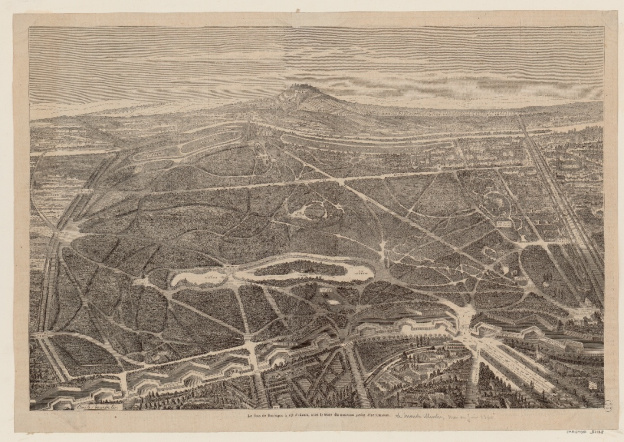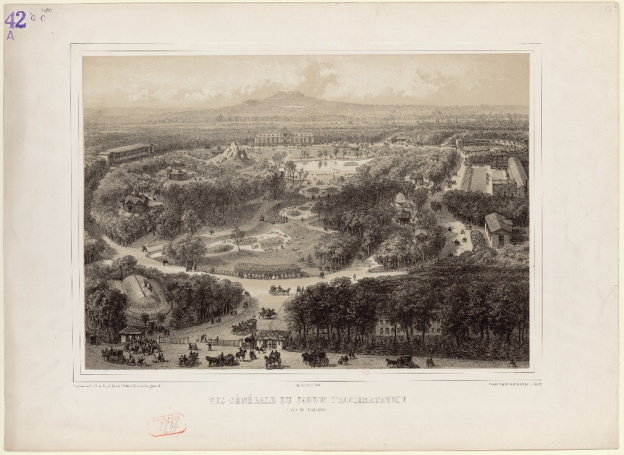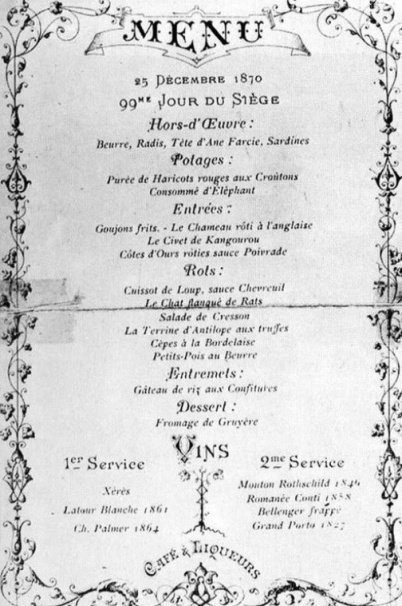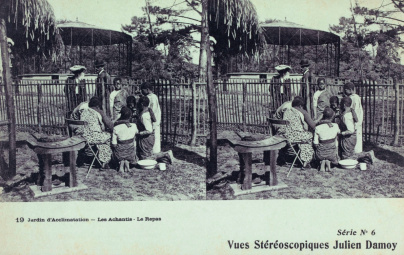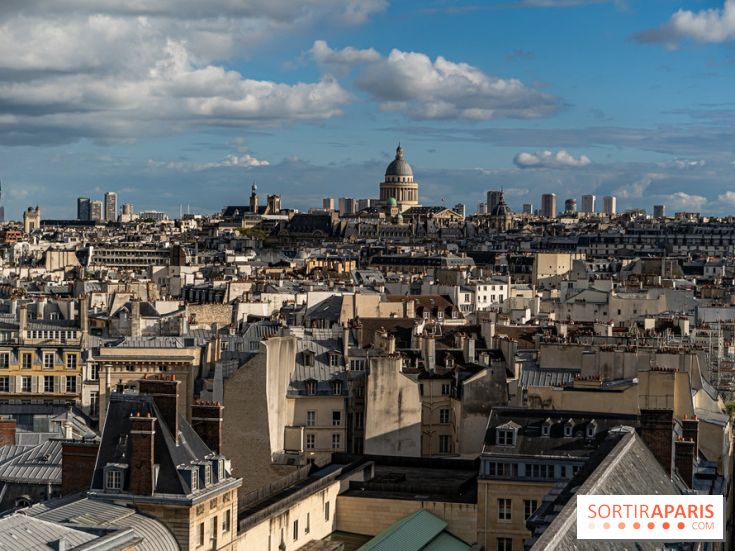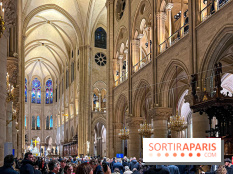On Tuesday, October 9, 1860, a fabulous French-style English garden opened its doors to the public under the aegis of Napoleon III andEmpress Eugénie. The Jardin d'Acclimatation, located at the entrance to the Bois de Boulogne, quickly became a place of discovery for Parisians, who came to marvel at its marvellous gardens and the many exotic animals brought from the four corners of the globe.
1852. The Bois de Boulogne had already been undergoing major transformations for a decade, in line withEmperor Napoleon III 's desire to make good use of and reshape this immense "green lung" on the edge of the capital to create a landscaped park modelled on English gardens.
On March 26, 1858, the Société Impériale Zoologique d'Acclimatation was granted a 15-hectare site on the northern edge of the Bois de Boulogne by the City of Paris, to be used as a "pleasure and exhibition garden for useful animals from all countries" .
Founded on February 10, 1854 by zoologist Isidore Geoffroy Saint-Hilaire and a number of friends, the aim of this learned society was to contribute to the introduction, acclimatization and domestication ofexotic animal and plant species, brought back from the most distant civilizations, by artificially recreating their natural environment.
In July 1859, the work was entrusted to the most prominent designers of the Second Empire:architect Gabriel Davioud, landscape architect Jean-Pierre Barillet-Deschamps andengineer Jean-Charles Alphand, under the patronage of the famous Baron Georges Eugène Haussmann.
After fifteen months' work, during which the Société d'Acclimatation was granted a further four hectares by Napoleon III, the Jardin d'Acclimatation was inaugurated on October 6, 1890 by Napoleon III and Empress Eugénie, in the presence ofAlexandre Dumas, Prosper Mérimée, Théophile Gautier and Hector Berlioz.
As soon as it opened to the public on October 9, 1860, this immense green space with its scientific, entertaining and educational vocation won the favor of Parisians of all social classes. Parisians flocked to see animals that few had ever seen with their own eyes.
In the garden's alleys, the curious can marvel at giraffes, zebras, kangaroos, cheetahs, antelopes, camels and bears, as well as exotic plants such as banana trees and bamboos. In October 1861, the Aquarium opened its doors, and by 1866, the Jardin d'Acclimatation boasted over 110,000 animals.
But the Franco-Prussian war of 1870 was about to put the brakes on the expansion of this wonderful garden. Besieged by enemy troops from September 20, 1870 to January 28, 1871, Paris was cut off from the rest of the country, and suffered a particularly harsh winter, coupled with a terrible famine.
Warned of the imminent arrival of German troops in the capital, the City of Paris decided toevacuate some of the park's animals to provincial zoos. The remaining animals were sent to the Jardin des Plantes and replaced in the Jardin d'Acclimatation enclosures by thousands of oxen and sheep to feed Parisians.
But despite rationing and the lack of ordinary foodstuffs available, the remaining animals were sacrificed to feed the population. So, while the working classes had to make do with rats as a meal for months on end, the wealthy Parisian classes were able to enjoy extravagant dishes such as elephant consommé, kangaroo stew, roast bear ribs and antelope terrine! By the end of the Siege of Paris, not a single animal remained in the Jardin d'Acclimatation.
Refurbished and embellished, the Jardin d'Acclimatation reopened to the public in 1872, and was gradually rebuilt thanks to donations, notably of two elephants donated by the King of Italy . The fauna, however, was more classical than in the early days, with a few giraffes, zebras and dromedaries alongside mainly farm and breeding animals, as well as birds.
Numerous improvements are made to the Jardin d'Acclimatation, with the creation of new attractions to entertain visitors. An additional sheepfold opened its doors, along with stables, a new silkworm farm,duck-breeding pens, a vast kennel and a gymnasium reserved for children, who could enjoy rides on the backs of zebras, dromedaries, goats and ostriches.
But it was above all the acquisition, in 1878, of the Petit Train, an ingenious railway system invented byindustrialist Paul Decauville, that was to leave a lasting impression. Originally, the line ran from L'Étoile through the Bois de Boulogne, but its route was soon modified and Porte Maillot became the departure station. This little train was the first narrow-gauge train to carry passengers in France!
The Jardin d'Acclimatation returned to its original scientific and educational ambitions, offering families a series of scientific lectures - on hygiene, travel, medicine and acclimatization - weekly concerts on the main lawn, sporting events and open-air cinema screenings, while a sports and hunting museum was also inaugurated and the first children's rides installed, already foreshadowing the garden's future.
But the late 19th and early 20th centuries were also marked by an unhealthy attraction to exoticism, travel and ethnology, against a backdrop ofcolonial expansion. The Jardin d'Acclimatation became a mecca for anthropology, organizing no fewer than 22 exhibitions of human beings from distant lands between 1877 and 1931.
The first ethnic exhibition was organized in 1877 by Albert Geoffroy Saint-Hilaire, the site's director, with the presentation of a troop of Nubians delivered by German zoologist Carl Hagenbeck and set up in front of the stables between the llama and mammal pavilions. Given the success of this first exhibition of human beings, the Jardin d'Acclimatation repeated the experience with African, Indian, Lapp and Cossack peoples.
But already, these "exhibitions of savages" were provoking lively societal debate, as the men exhibited were confined animal-like in the cages next door, and the Société d'Acclimatation severely repudiated the sensationalism of these events, despite the fact that attendance at the garden was rising sharply, approaching one million visitors.
The Jardin d'Acclimatation held its last ethnic exhibition in 1931, although in recent years it had exhibited people selected from various parts of theFrench colonial empire, from Senegal to North Africa and New Caledonia.
At the beginning of the 20th century, faced with declining attendance, the Jardin d'Acclimatation moved away from its educational mission and gradually turned towardsamusement and entertainment. So, to attract back families who now preferred the new amusement parks such as Luna Park, located since 1909 at Porte Maillot, or Magic City, set up in 1911 on the banks of the Seine, the garden took the Tivoli amusement park in Copenhagen as its model, equipping itself with modern rides and increasing the number of cinema screenings and circus shows.
But war once again put the brakes on the Jardin d'Acclimatation's success story. While other new features were envisaged by the garden team, such as the construction of a swimming pool and a stadium, the Second World War put the brakes on the site's momentum, and it wasn't until the 1950s that the Jardin d'Acclimatation was back on its feet.
The wild animals disappeared, the funfair was scaled down, and a Guignol puppet show was opened for children, along with a small farm featuring ponies, goats and donkeys. The now defunct Musée en Herbe was built, as was the Musée National des Arts et Traditions Populaires in place of the Palmarium, a masterpiece of glass and steel destroyed for the occasion. But the recipe no longer worked.
After years of drifting, the garden concession was handed over to the LVMH group in 1995, which undertook major renovations and made way for greenery and flowerbeds.Oriental-inspired in the 2000s, the site opted for asteampunk aesthetic in 2017, began major modernization and restoration work on the buildings constructed under Napoleon III, and acquired new attractions for families.
Find outmore:
Now that you know the history of the Jardin d'Acclimatation, it's time to visit the site and discover what France's oldest amusement park has in store for you!
Location
Jardin d'Acclimatation
Route de la Porte Dauphine à la Porte des Sablons
75116 Paris 16
More information
Iconographies : Header : Large greenhouse of the Jardin d'Acclimatation, Jean Best Bois de Boulogne as the crow flies, with the layout of the new Jardin d'Acclimatation, Anonyme General view of the Jardin d'Acclimatation, Th. Muller Menu of December 25, 1870, at Café Voisin Les Achantis - Le Repas, Julien Damoy Jardin d'Acclimatation, Alfred Delauney

